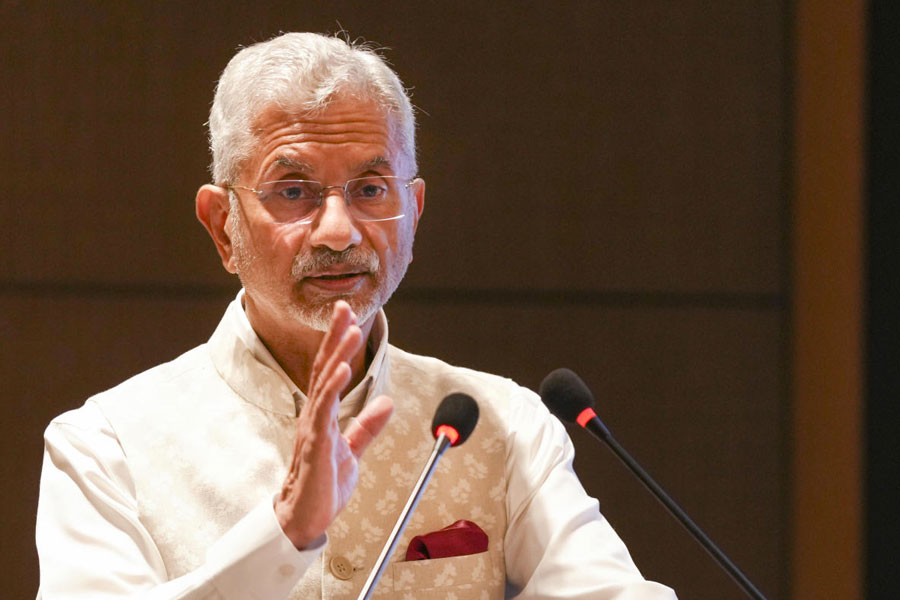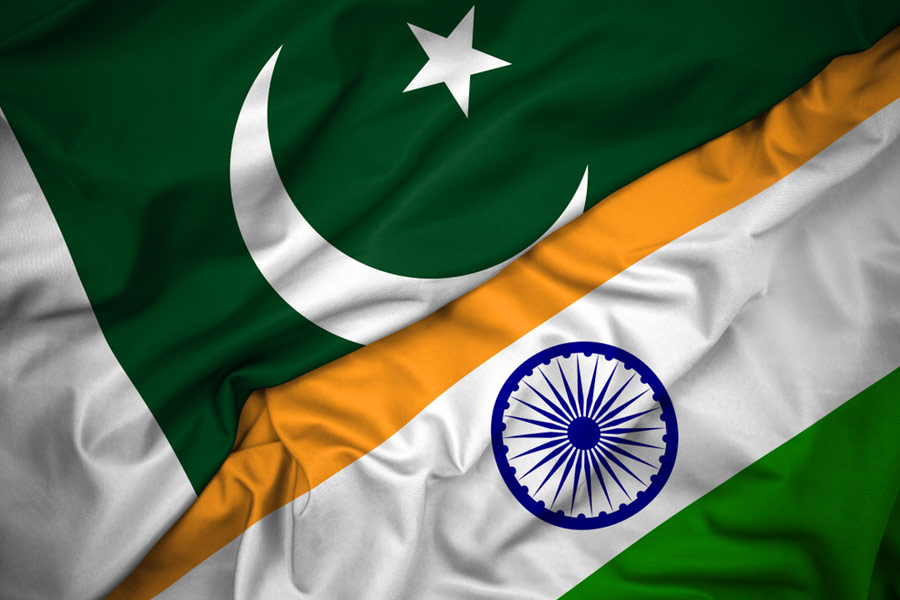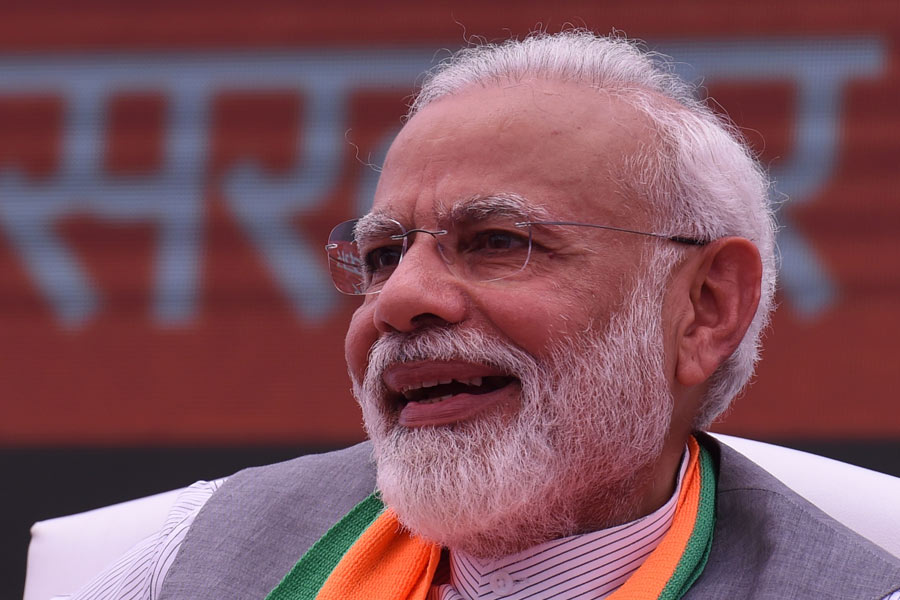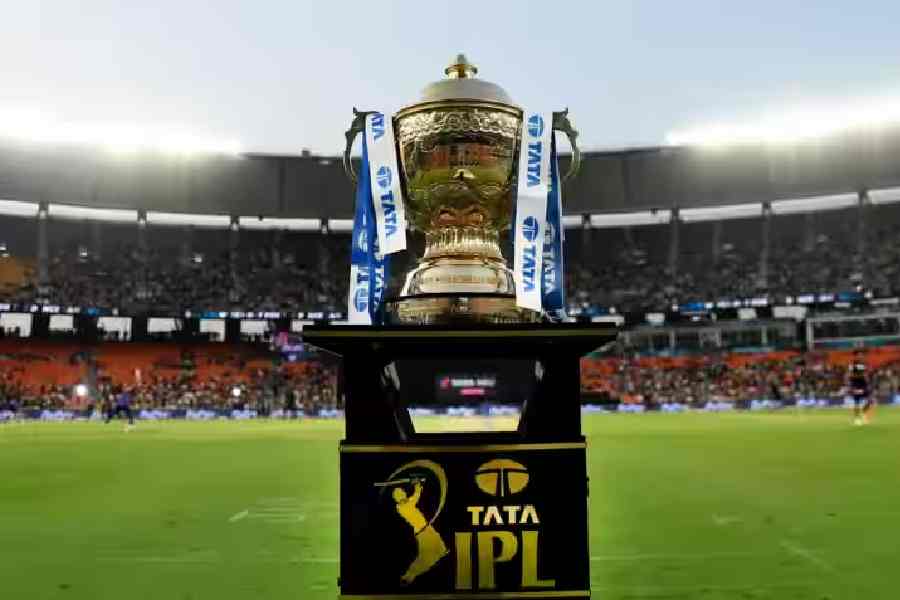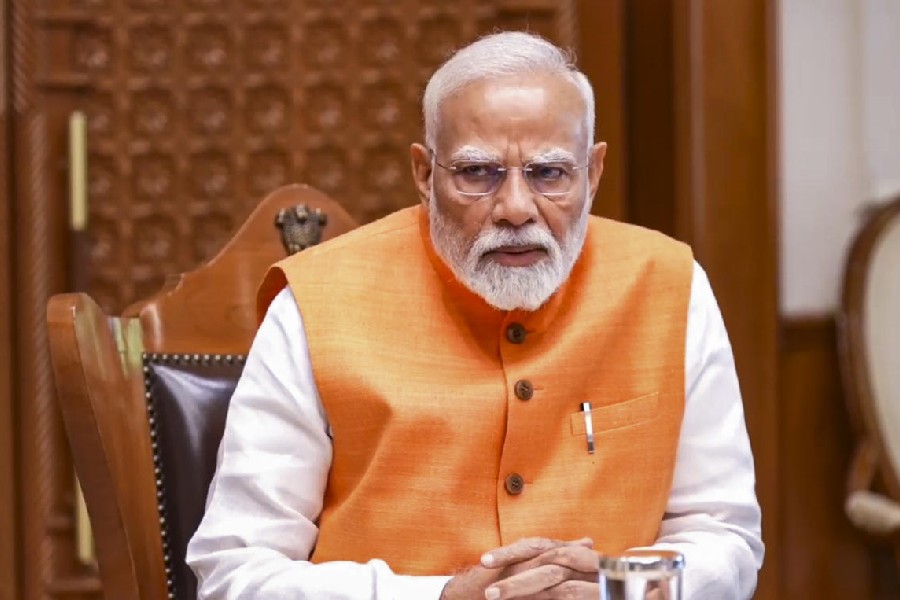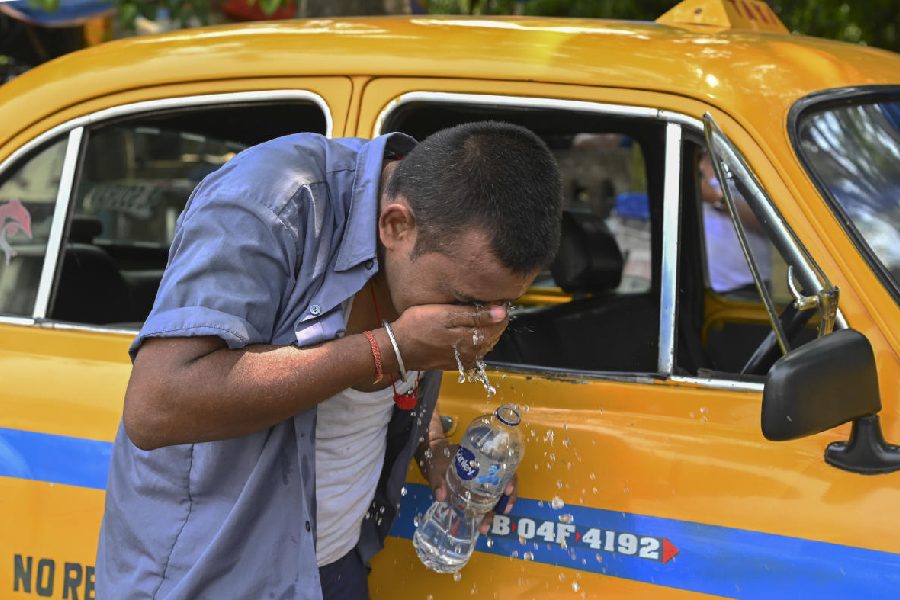 |
 |
| The vastraharan episode from The Mahabharata, in which P. Lal (Top) says Krishna had no role. Picture by Subha Bhattacharya |
So you think someone actually supplied Draupadi those yards of cloth?” In all our experiences with The Mahabharata, Lord Krishna has always appeared to rescue the Pandava queen from being stripped in public by Duhshashana. “Rubbish. Krishna never came,” P. Lal, seated in his Lake Gardens home, swats the claim.
There could be no challenging the “trans-creator” of the epic, who has translated Vyasa’s original Sanskrit work shloka by shloka over the past 38 years.
“Then why would Krishna apologise to Draupadi when they later met in the forest, saying that he was busy defending Dwaraka against Shalva and could not help her?”
Lal blames the “Vaishnava influence (in subsequent translations) and the cheap adoration of divinity” for the misconception.
“It is clearly said in the court scene that it was Dharma who robed her. Dharma is Vidura, not Krishna. There is no word for miracle in Sanskrit.”
Lal has included all the recensions, or subsequent alterations, in his translation. “Down the years, translators have made omissions and changes according to their tastes.” He cites many examples.
“The vastraharan scene troubled morals in Victorian times. Ramesh Chandra Dutt’s English translation is in rhyming couplets all through. How do you justify Duryodhana telling Draupadi “…‘come sit on my knee / With a wicked lustful eye…’?” One can imagine what should have rhymed with eye but thigh must have seemed offensive.
“Again, during the years in the forests, Vyasa says the Pandavas survived on mansa, or flesh. Look up the Gita Press edition and you will find the word twisted to mean flesh of fruits and hence the Hindi translation phal, or fruits. Why, check the dictionary and you’ll see vanara means vana nara or forest folk, not monkeys.”
“And rakshash is one who protects, not a demon.” Such interventions abound in the translations of other religious texts too, Lal assures.
“In the Afrikaans Bible, they had changed Solomon’s description in Song of Solomon from ‘black and comely’ to ‘brown and comely’.”
Lal was drawn to the epic as a college student, when Canto XI of The Geeta was in the syllabus. “It troubled me why Arjuna would be the only one refusing to fight when his reasons applied to all the other Pandavas. That led me to study the rest of the book. Since the best way to understand a work is by translation, I started doing so.”
The result was on view in the St Xavier’s College magazine. But that was 1952 and Lal was barely 23.
At 80, he has a far more complex take on the epic that he has been reading to the public every Thursday at GD Birla Sabhagar for eight years now. “There is a core group which comes every week. The Mahabharata has an aural quality. It is meant to be read.” And not televised.
Lal has caught both B.R. Chopra’s and Ekta Kapoor’s versions but feels neither is worth a comment. A DVD version of his readings was released before Puja.
“Every word of Vyasa has another face. Take the four pillars of character — dharma can mean ritual or spiritual, kama love or lust, artha money or meaning of money, and moksha escape or liberation. It is up to you to choose.”
Lal is content. He has been printing each parva through his one-man publishing outfit Writers Workshop, which turned 50 this year. “I am at Shanti Parva. Only Anushashan Parva is left. I think I can finish it before I die.”


